
Humane Ai Pin: It just doesn’t work
The Humane AI Pin: A futuristic wearable aiming to replace smartphones, but its high price, underwhelming performance, and UX issues led to its swift downfall.
Buried soon ?
Can a $3,500 headset change how we interact with technology? Apple certainly thinks so, but one year after the launch, the answer seems far from clear.
Now it's becoming more obvious that Vision Pro might have a tough time becoming popular.
So, Apple Vision Pro is a mixed-reality headset that combines augmented reality (AR) and virtual reality (VR), allowing you to interact with digital content overlaid onto the real world or immerse themselves entirely in virtual environments.
Vision Pro is like the most high-tech mixed reality headset out there. It’s got dual micro-OLED displays with 23 million pixels, giving you a super clear and immersive visual experience. Plus, it’s got 12 cameras, 5 sensors, and 6 microphones to track your eye movements, hand gestures, and voice commands accurately.

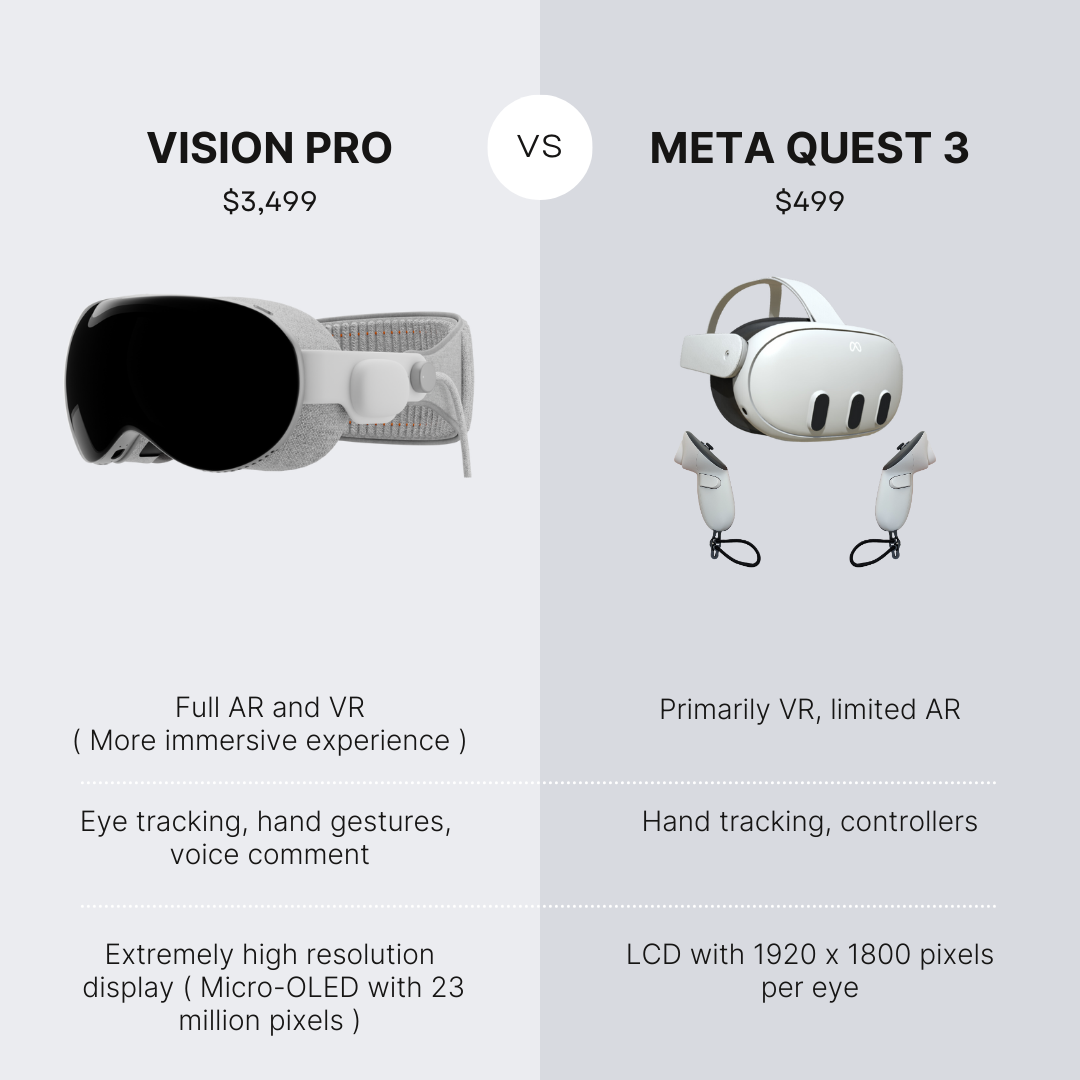
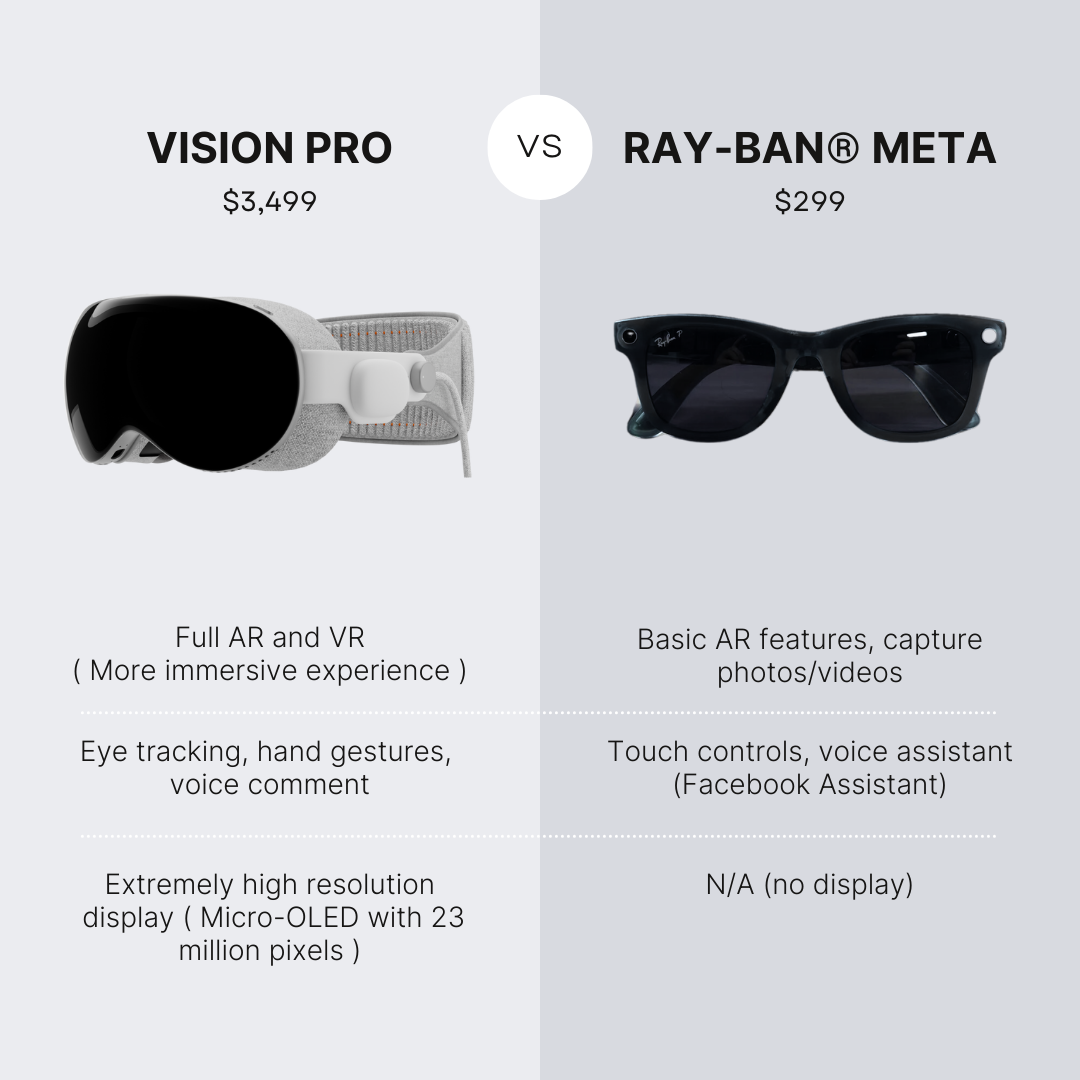



One [Apple Store] employee says they haven’t seen one Vision Pro purchase in weeks and that the number of returns equalled the device’s sales in the first month that it was available.
— Mark Gurman in Bloomberg
Initially, Apple expected to sell over 800,000 units this year. Now, they’re predicting sales of around 400,000 to 450,000 units. Although Apple almost sold out within the first few days in January, Vision Pro is yet to sell 100,000 units in the next quarter.
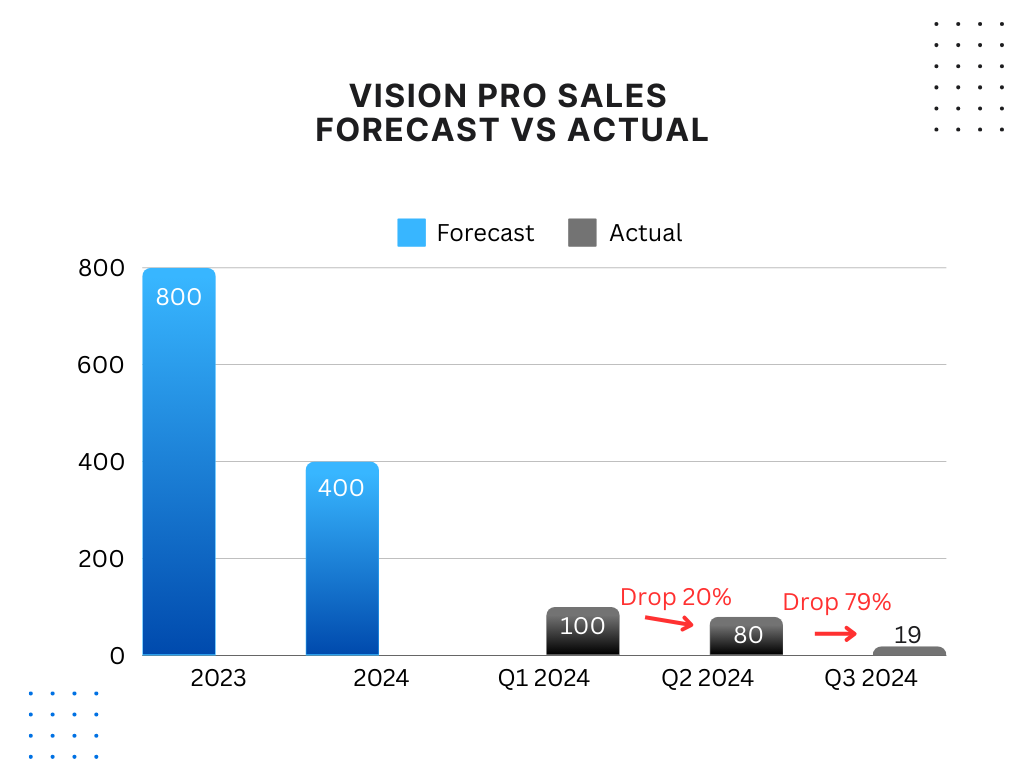
While Apple’s iPod, iPhone, and iPad all saw significant success in their early years, the Vision Pro has experienced the slowest start of any major Apple product, even compared to the Apple Watch.

Nothing is more valuable than the words of Vision Pro’s users as they share their experiences and opinions. We have gathered feedback from top tech reviewers and journalists who have tested Vision Pro, and here is what they had to say:
According to 15 most subscribed YouTube tech reviewers, who have used Vision Pro longer than 1 months, here are the most mentioned issues of this 1st-gen mixed-reality headset.
Starting at $3,499 for a 1st-gen product, this price makes most of people step back, even Apple enthusiasts. This price is the biggest obstacles that discourage people to buy Vision Pro, despite the experience is differently not less than WOW.
Vision Pro weights nearly 600 gram ( 22.9 ounces). It’s heavier than an 11-inch iPad Pro (470 grams). Most users find it uncomfortable during extended use.
It has battery life of 2 hours for general use and 2.5 hours for video playback. This issue can be solved using Apple external battery, you just need to get used to with the wire behind your back.
Unlike iPad 1st-gen, where you could access all iPhone apps, VisionOS requires its native apps. Apple launched this headset before having popular apps ready on this platform. Though you can work around through Safari, you can’t utilise the immersive display on Vision Pro.
All the people I know with Apple Vision used it for about a month and haven’t touched it again. It seems to be a pretty common experience with most first generation VR headsets.
I bought the first Oculus and probably only used it for 30 hours or so total, and most of that was just showing people that were curious.— NebulousNitrate, Redditor who received highest votes for this comment
Apple presents this VR headset as something that can be enjoyed by pretty much everyone, from entertainment enthusiasts to professionals. But, Vision Pro users think this headset is most suitable for:
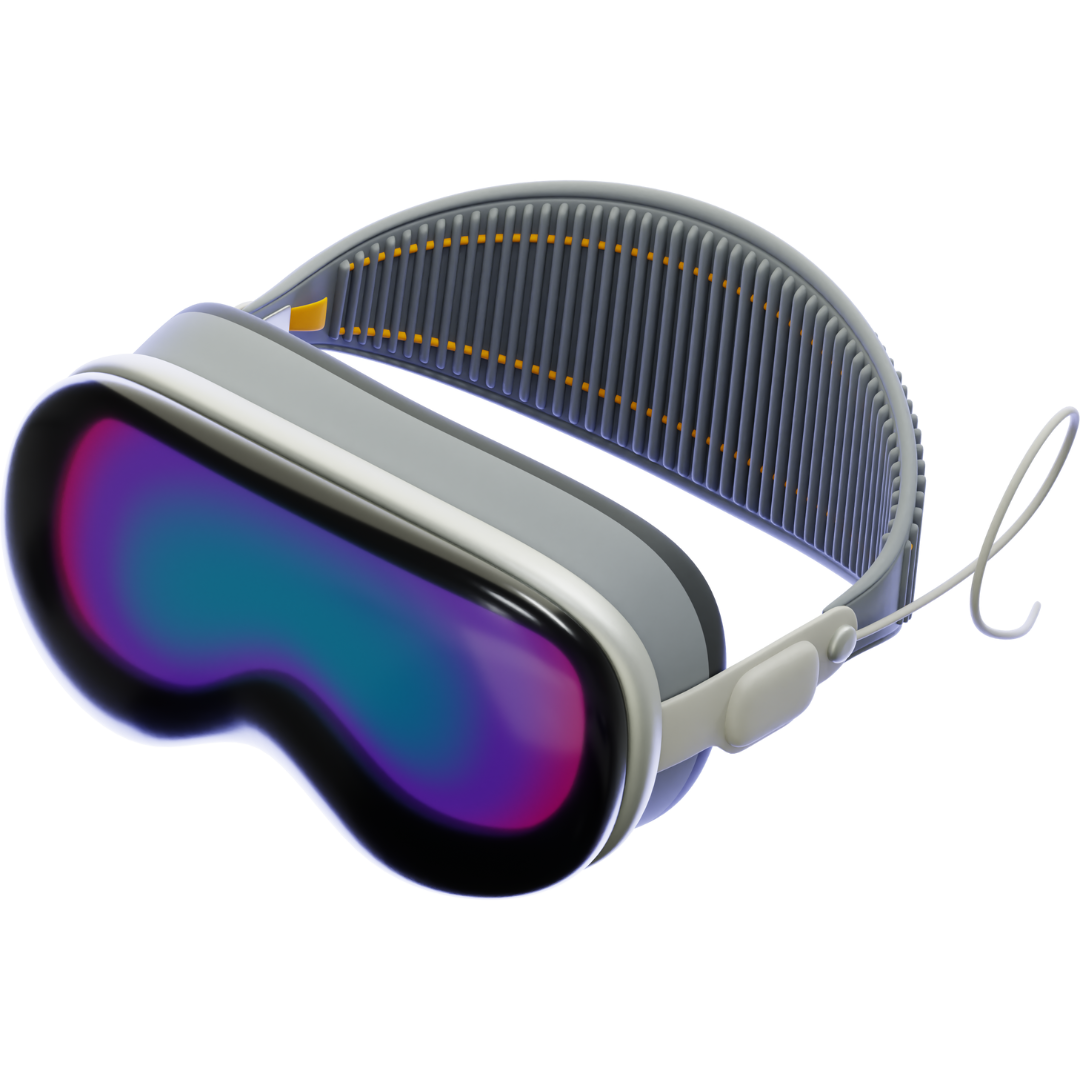

Apple is definitely pushing boundaries with this whole spatial computing thing. But it’s got serious obstacles to resolve. We’re talking about challenges that could make or break this thing. Let’s take a closer look at three of the biggest ones
In 2015, the Apple Watch had a slow start, but since fitness trackers and smartwatches were already familiar concepts, people warmed up to it. However, Vision Pro faces a unique challenge in convincing people to embrace a brand-new behaviour: wearing a computer on their.
Will Vision Pro become another Macintosh, a potential that pave a foundation to revolutionise computing, yet the world needs more time to embrace it?
Vision Pro starts at $3,499 with 256GB of storage.
Also, the Vision Pro doesn’t work with glasses, so if you wear glasses, you’ll need to get lens inserts from Zeiss, which cost $99 for reader versions or $149 for prescription versions.
Lastly, if you need a way to carry that battery pack around, Belkin has a clip-on battery holder that costs $50.
When Apple decided to cancel the Vision Pro 2, it seemed to acknowledge the pricing issue. The company is now focusing on developing a more affordable model, slated for a launch in early 2026.

The Humane AI Pin: A futuristic wearable aiming to replace smartphones, but its high price, underwhelming performance, and UX issues led to its swift downfall.

Google Glass, faced initial challenges due to its high price, privacy concerns, and limited use cases. Despite its innovative features, Google killed this product in 2023.
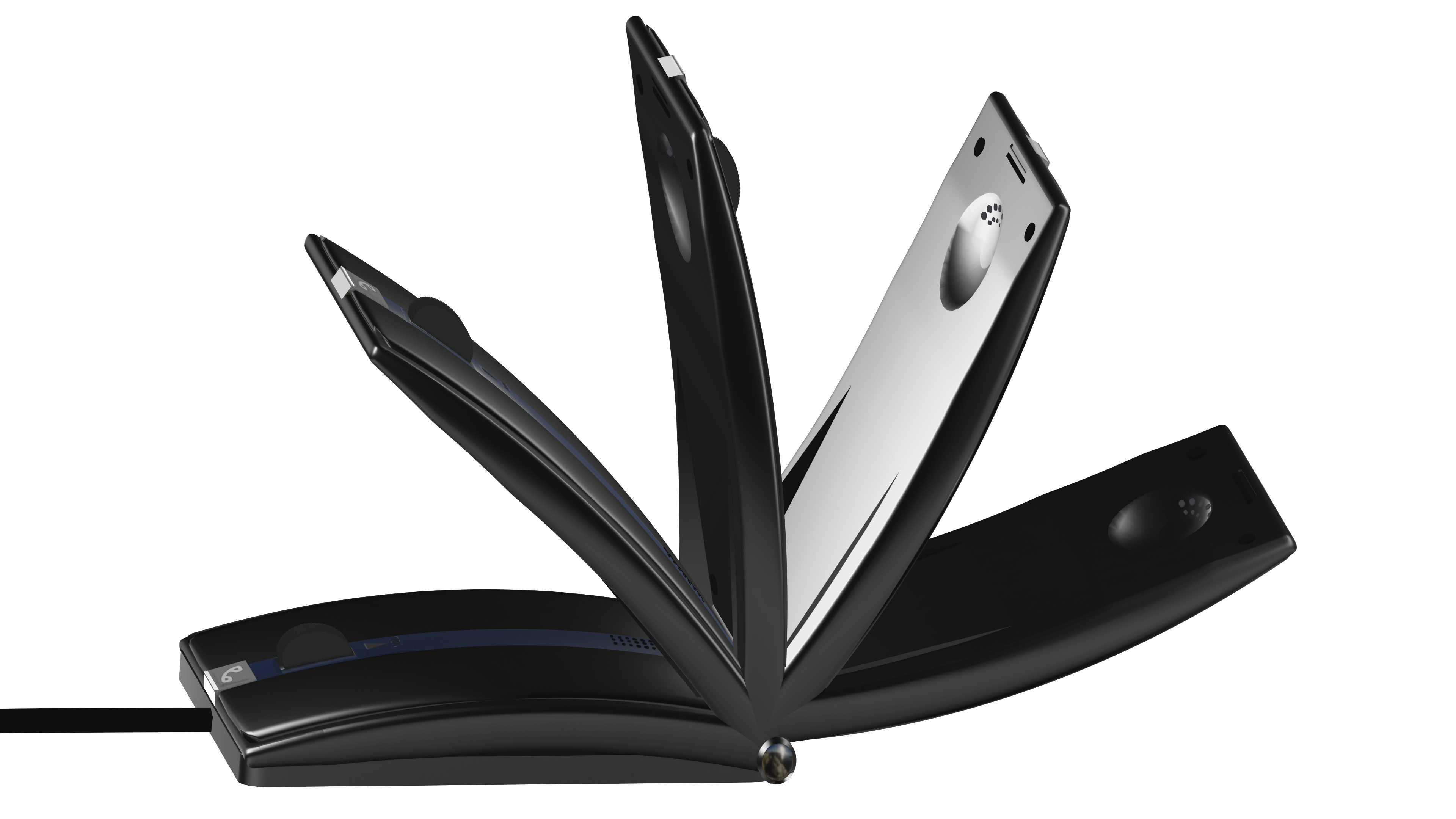
A computer mouse that tried to be a phone but ended up being nothing. What led to this innovative concept’s rapid downfall in less than a year?